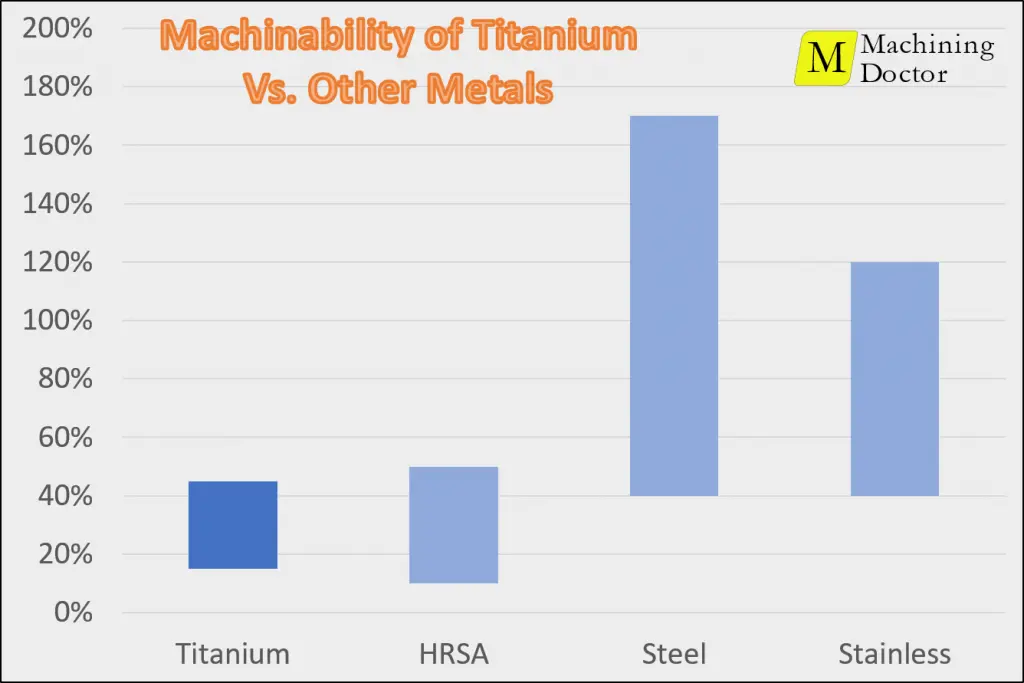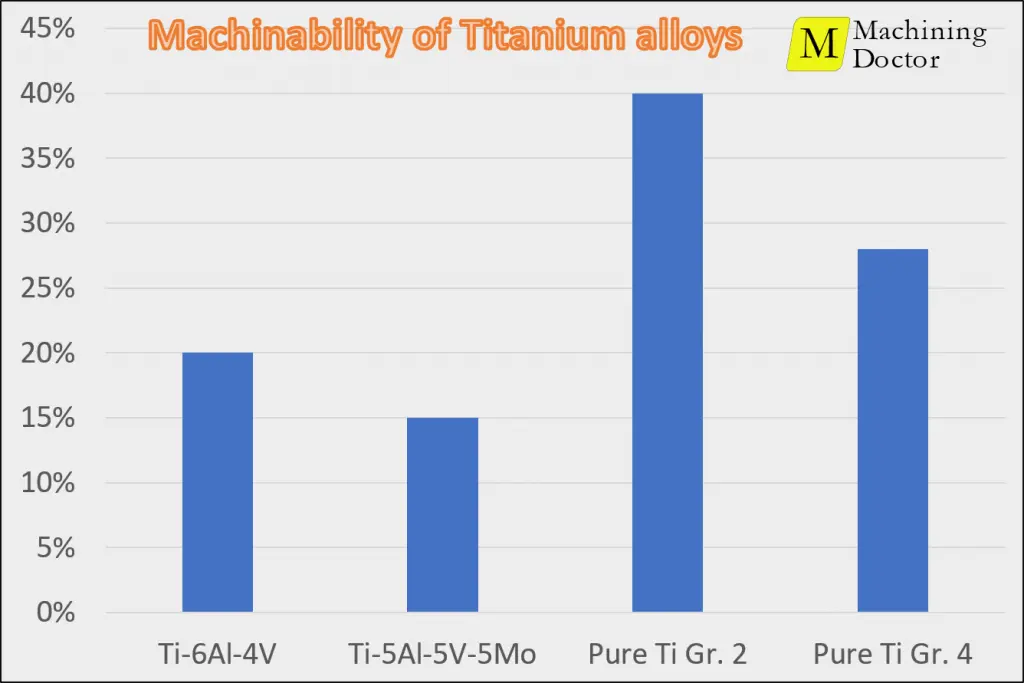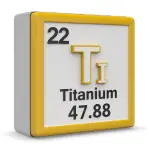Titanium is an expensive and challenging material to machine. Although not as popular in machine shops as steel or aluminum, due to the high material and manufacturing cost, it’s an important material to master. The machinability ranges from 15% to 45%.


What is a Tiatnium Alloy?

Titanium is a chemical element with the symbol Ti. Titanium alloy is usually made from about 88% of Ti with alloying elements, mostly vanadium (V) and aluminum (Al). What makes it a unique and useful metal are several properties not found together in other materials. It has an excellent strength-to-weight ratio. On the one hand, it is almost as light as aluminum, and on the other hand, it has a higher strength than most steel alloys. On top of that, it has superb corrosion resistance. This combination makes it popular in aerospace components and medical implants.
Titanium Machinability
- Titanium has very low heat conductivity. This causes heat generated from the cut to transfer mainly to the cutting tool, instead of flowing to the chips and the workpiece.
- Titanium has high flexibility, thus bending easily by the cutting forces.
- Some of the popular titanium alloys have high hardness. For example, the popular Ti-6Al-4V alloy is 32 HRC, and other alloys can reach 40 HRC.
The easiest to machine are “Pure Titanium” alloys. They are not exactly “pure”, since they are made from 99.5%-99.8% of titanium with a small addition of Iron (Fe) and carbon (C). They are classified according to the titanium content as grade 1 through grade 4. (The most popular being grade 2).
Machinability of Pure Titanium
To get the cutting speeds for Titanium in any application, use our Speed & Feed Calculator
Most of the titanium applications found in machine shops are of titanium alloys that contain alloying elements up to 15% weight content. On top of that, most of the alloys are heat-treated to a hardness of 30-40 HRC. This combination gives them excellent mechanical properties but also makes them much tougher to machine compared with pure titanium.
Machinability of Titanium Alloys
To get the cutting speeds for Titanium in any application, use our Speed & Feed Calculator









